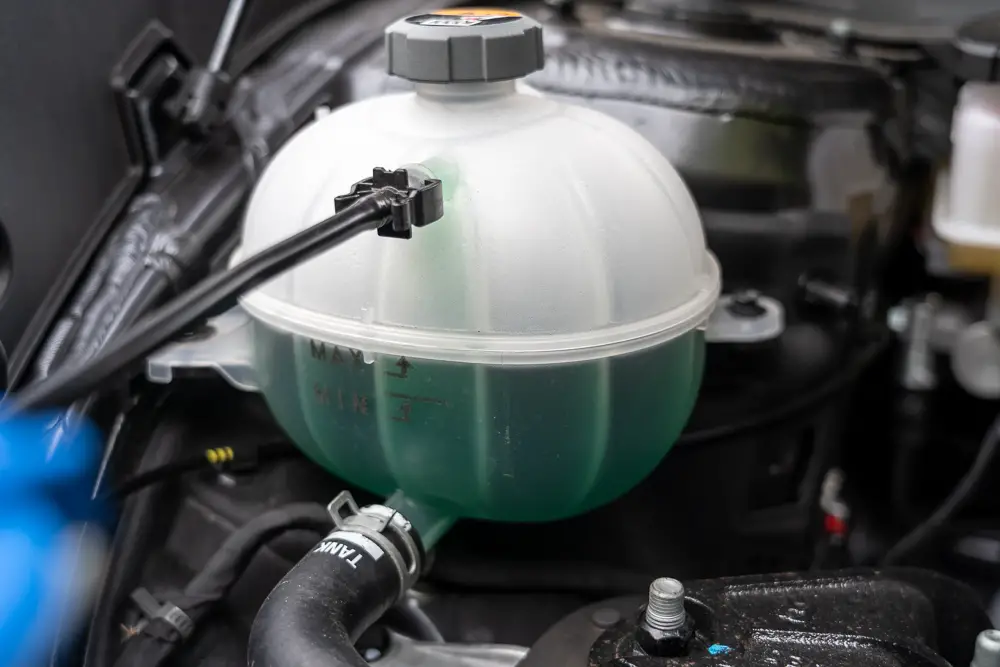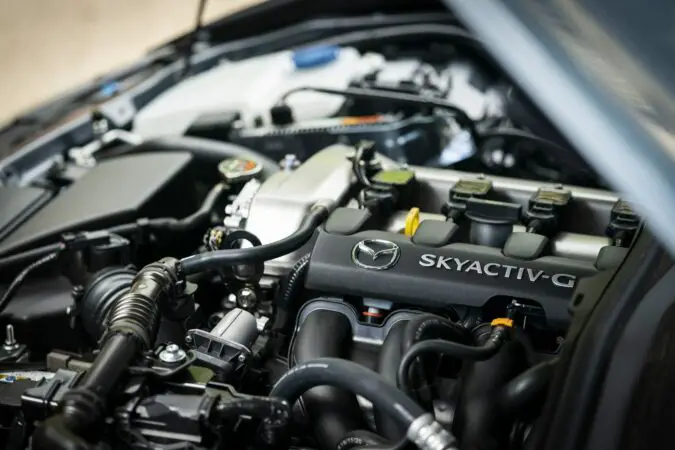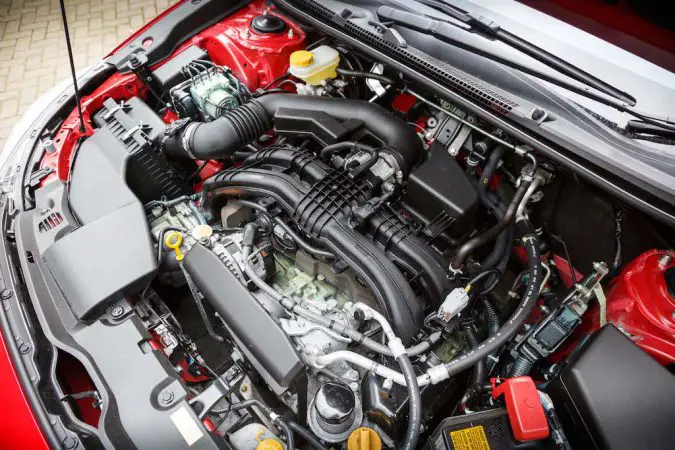A car engine constitutes a lot of components. Since the engine is the heart of the car, it helps keep things running properly. There are a lot of elements inside the engine that works together in a complex process. That ensures your car runs smoothly. When even one component fails or malfunctions, it can hinder the entire process. Is the thermostat in your car not working properly? Here is all you need to know if you are considering a thermostat car replacement.
As a result, you will end up with a car acting up. Sometimes, it would be impossible to drive the car without resolving the issue within the engine. A thermostat in a car is an important element, but many people are not aware of its functions. If your car thermostat is faulty, it can be disastrous for the engine.
After reading this, you will learn about a car thermostat and thermostat car replacement. It will help you recognize whether your car needs a thermostat replacement or not.
- About Thermostat And Its Function
- The Thermostat And The Cooling System
- Types Of Thermostats In Car
- Bad Thermostat Car Symptoms
- Thermostat Fail
- Check A Thermostat In the Car
- Replacement Cost
Coolant Thermostat
You can probably guess from the name ‘thermostat’ that it has something to do with temperature. The thermostat in a car is a cooling system component that serves two primary purposes. First, the thermostat heats the engine to its optimal temperature as fast as possible. Second, the thermostat keeps that ideal temperature maintained.
The engine is the most crucial part of a car. As long as the engine is working fine, you have nothing to worry about. Since the engine runs everything inside the automobile, many elements come into play to ensure the engine remains working. Maintaining the engine temperature is necessary. A thermostat takes on that essential task.
https://www.youtube.com/watch?v=hM6pfjX5jik
When the engine turns on, the thermostat releases a coolant that goes into the engine. The coolant and thermostat work together. With the help of this coolant, the engine will not overheat no matter how long you keep it running. The thermostat does not always release the coolant into the engine.
If your car is parked and you turn on the engine, there is no need for the thermostat to release coolant since the car is not moving. The thermostat releases coolant only when you drive the car. How does the thermostat know when to release the coolant?
There is a coolant temperature sensor, also known as the CTS. It reads the engine’s temperature and sends that data to the thermostat. Then the thermostat knows whether it is time to release the coolant or not.
Check out this video to see how a thermostat works!
Thermostat In Car And The Cooling System
The cooling system in a car monitors the temperature of the engine. To ensure proper functioning, it is essential to monitor the engine temperature. If the engine gets too hot, there can be irreversible damage.
There is coolant traveling through the engine and detecting the added temperature once the car is running. The coolant picks the temperature and absorbs it while going to the radiator. Once the radiator gets rid of that heat, the coolant goes to the engine again. This is a cycle that helps maintain the can engine temperature.
The thermostat in a car works as a channel between the car radiator and the engine itself. If the car engine is not hot enough, the coolant traveling through the radiator will not pick up the access heat. The thermostat will not trigger unless the engine is hot enough for the coolant to work.
Once the engine reaches the necessary temperature, the thermostat opens up to allow the coolant to pass. The excess heat dissipates evenly when the coolant travels through the engine and the radiator. The coolant is cooled again, and it repeats the process.
The coolant will not release into the engine if there is no thermostat assisting in the coolant system. It will not pick up the different temperatures from the engine and run them through the radiator. As a result, the car engine will overheat.
Types Of Thermostat
1. Bi-Metallic Thermostat
Bi-metallic thermostats are in the radiator system’s hot water. The thermostat itself often has a bi-metal strip. The valve is automated and helps adjust the flow depending on the temperature. Mechanical thermostats control dampers in roof turbine vents, which reduce heat loss during cold building situations.
2. Bellows Thermostat
In a bellows-type thermostat, you will find a metal chamber. With ethyl at low boiling temperature, the chamber fills halfway.
3. No Bypass Valve
Old cars usually carry this type of thermostat. It is one of the cheapest thermostats, but there are some drawbacks. The radiator inflow contains this thermostat. It does not include a spare line that allows cooling water to pass when the thermostat fails.
When the engine is cold, water will become trapped in the radiator. There are no water lines to help the engine to cool down.
4. Wax Pellet
This thermostat is often used in combustion engines to keep the engine’s core temperature at ideal operating levels. It helps control coolant flow to an outer heat sink. The wax pellets in the thermostat are usually solid at a cool temperature. But the wax melts and spreads once the machine heats up.
When the operating temperature surpasses, the enclosed compartment features an expansion mechanism that works the shaft that opens the valve.
Sign Of A Bad Thermostat
It is not difficult to notice when you have a bad thermostat in the car. Some glaring symptoms will let you know that the thermostat in your car is not working as it should. Since the thermostat is part of the engine, some of these symptoms will start from there.
As soon as you see any of these symptoms occurring in your car, it would help if you got the thermostat checked out. Schedule for a car thermostat replacement if there is a need for one. While it is possible to drive around in a car with a bad thermostat, it would not be a good idea.
The engine can suffer from serious damage if the bad thermostat is in the car. The engine will constantly be overheating, and the result will be disastrous. So look out for these bad thermostat symptoms in the car.
1. Temperature Reading
After switching on the car ignition, you will notice the needle in the temperature gauge indicate that it is cold. Once you start driving, the temperature will continue to rise. The thermostat will open and release the necessary coolant to flow through the engine and the radiator when the engine is hot enough.
When the thermostat in your car is not working properly, the coolant will not release. You might notice the temperature gauge indicates that the engine temperature is not decreasing at all. If you continue driving the car at a high temperature, it could damage the engine.
2. Thermostat Stuck Open/Close
When the thermostat is stuck open while driving, the engine temperature falls below standard. A left open thermostat might also result in a lack of temperature from the heating system. You might also notice that the engine takes longer to heat up with the thermostat stuck open.
If the thermostat is stuck closed, the engine will noticeably overheat. A failing thermostat can also cause the check engine light to turn on.
3. Temperature Fluctuations
When the thermostat in your car is failing, it will not affect just the engine but the overall temperature of the car. You may notice the temperature inside your car dropping drastically and then picking up the next second.
Unless you messed around with the HVAC setting in your car, that is a clear indication of the thermostat being faulty.
4. Drop-In Engine Performance
The thermostat helps the engine to run at ideal operating temperatures. If the thermostat is not working properly, it might cause issues with engine performance.
One of the most noticeable consequences is a decrease in fuel efficiency. Your engine might struggle to function with an impotent cooling system. With the fuel efficiency dropping, you will visit the gas station more often than normal.
5. Coolant Leaking
You can check under the hood of your car around the thermostat to determine if there is any coolant pooling there. If you jam to close the thermostat valve, then the coolant might leak around the thermostat. And so, the pressure is forcing the coolant to seep out. If the leak is severe enough, you will find coolant collecting under the car.
6. Unusual Noises
You can hear crackling or rumbling noises from the engine or the radiator. This is not a symptom to look out for since any other problem with the engine can cause noises. But if you notice the noises accompanying any of the above symptoms, then it is safe to assume that it is a sign! Meaning it’s a bad thermostat.
Why Does A Thermostat Fail?
You know your car thermostat is failing when the thermostat’s valve refuses to open or becomes stuck in a partially-open state. Since the thermostat regulates coolant circulation to the engine, it can either prevent the car from heating up or lead it to overheat.
There are several reasons for a thermostat car malfunction.
1. Contaminated Coolant
Like any other vehicle fluid, coolant can become polluted after a while. A common issue is when coolant turns into a sticky sludge-like substance. This muck can accumulate into the thermostat and completely limit or block off the flow.
The liquid also stops the thermostat from obtaining proper readings. This can create delays in the opening and shutting off the thermostat. As a result of the thermostat not working properly, the engine can experience overheating or overcooling.
2. Mechanical Problems
Mechanical problems are common since deposits might form and stop the thermostat valve from totally sealing. The rod can drift from a centered position with wear and refuse to properly open or shut. It can also become stuck in one position.
3. Too Old
Time is an unavoidable concept with anything. The thermostat in your car can wear out over time. A thermostat is constantly working on keeping the engine at an optimum temperature. The thermostat is not unheard of to stop working and fail to do its job.
4. Problem With Installation
Mistakes can happen anytime. Whether it was you or a mechanic who installed a new thermostat in the car, there are possible to be mistaken. If you install the thermostat backward, the sensor will not face the engine as it should.
As a result, there will be a delay in the thermostat to sense the temperature rise in the engine.
How To Check A Thermostat In Car?
The thermostat in a car does not situate where you can just reach in and remove it. Since the thermostat is often buried under other engine parts, removing it for checking is a messy ordeal. However, we now know that testing a car thermostat without removing it is possible.
First, turn the car ignition and allow the engine to run at idle for a while. Then, open the car hood and remove the radiator cap. Peek inside to see if you can find any coolant sloshing around. There should not be any coolant flowing around since the car engine is not hot enough.
Allow the car engine temperature to rise and keep an eye out for coolant. If you notice the coolant flowing after the engine has heated up for some time, the thermostat is working correctly.
Should you notice the coolant too early, it means the thermostat valve is stuck open. If there is no coolant reaching the radiator even after the engine temperature steadily rises, the thermostat valve is stuck close.
Whether the valve is stuck open or close, you will need to replace the thermostat in both cases.
Thermostat Replacement Cost
A thermostat housing replacement cost should not exceed $400 unless your car is a luxury sports car or a rare model. The overall cost should be around $120-350, including the costs for parts and labor. A thermostat will cost around $25-80. The price will vary depending on the make and model of the car.
As for the labor cost, that will depend on several factors. The location of your workshop, how capable they are, and how the market charge is in that area. Such factors will come into play while deciding on a labor cost. We estimate the labor cost to be around $200.
If you have enough knowledge about cars and thermostats, you can probably save the car thermostat installation charge yourself.
However, aside from the thermostat installation, some additional services can cost you extra. After you replace the thermostat, replace the coolant in the engine as well. New coolant has to be flushed to ensure there are no air pockets.
Mechanics often check for other issues in the cooling system while doing a thermostat replacement. If there are any issues with the valve, the radiator, or the water pump, they will charge you for those services. So do not be surprised if the finance spent is more than you anticipated. Just let your mechanic explain the problems before giving you a quote.
Can You Drive A Car With A Bad Thermostat?
While the car will remain operational even when the thermostat fails, it’s better that you don’t continue driving around. There are some bad effects of running a car without a thermostat.
A thermostat helps maintain the engine’s temperature while the car is running. If it fails to do that, then the engine will be overheating all the time. Continuing to drive your car in that state can do some serious damage to the engine. So try to replace the thermostat as soon as you notice an issue with the cooling system.
A thermostat replacement does not cost that much. But if you wait too long and let the engine suffer from continuous overheating, the damage will worsen. You may end up paying for an engine replacement instead, which will cost you a fortune.
Car Thermostat Facts:
- A car’s thermostat regulates the flow of coolant through the engine and is essential to the operation of the vehicle.
- Thermostat failure is one of the car problems you can diagnose and fix yourself, and it’s relatively inexpensive to replace.
- Signs of a failing car thermostat include a high-temperature gauge reading and engine overheating, erratic temperature changes, and coolant leaks.
- A car’s engine overheats when a corroded metal rod damages the rubber seal, allowing the wax to leak out of the pellet and causing the thermostat to stop opening.
- An erratic temperature gauge reading is a sign of a failing car thermostat, and you should keep an eye on it.
- Lack of fluid due to coolant leaking from the thermostat housing can affect the engine’s performance.
- You can test a car thermostat by checking the coolant flow and temperature before removing it from the vehicle.
- To test the thermostat outside of the car, you can place it in a pot of water on your kitchen stove and observe it as it opens and closes at certain temperatures.
- If your thermostat fails, flush the system and add fresh coolant when replacing it (make sure you’re also aware of where do I put antifreeze in my car), and don’t buy a cheap thermostat.
- Premium thermostats are built to resist corrosion, and some manufacturers even offer “fail-safe” models that prevent engine overheating.
FAQs
Here are some popular FAQs:
What Does A Thermostat Do In A Car
The thermostat is a crucial part of the car cooling system. It helps regulate the circulation of engine cooling from the radiator in a car. A thermostat is crucial to prevent overheating a car engine.
Where Is The Thermostat
The thermostat locates itself inside the waterline, traveling between the engine and radiator.
How To Tell If The Thermostat Is Bad In A Car
There are several ways of telling if the thermostat is bad in a car. There are a few most noticeable signs of a bad thermostat. That’s an unusual engine temperature, coolant leaking, sudden change in-car temperature, strange noises coming from the engine, overheated engine, etc. If you notice any of these signs in your car, you can assume that the thermostat in the car has gone bad. Take your car to the mechanic as quickly as you can.
Why Is My Car Overheating With A New Thermostat
If your car is still overheating after getting a new thermostat, few possible reasons. Your car’s radiator or heater core can be clogged up, the water pump is probably not working, and the radiator is faulty! Or any other problems in the coolant can cause overheating.
How Much Is A Thermostat For A Car
The cost of the thermostat itself will be between $25 and $90 for any car. If it is a luxury car, a rare model, or a sports car, the cost will be much higher.
How To Change A Thermostat In A Car
Changing a thermostat in a car is not an easy feat. But it is possible to change a thermostat at home if you know what you are doing. Watch this video to learn more about replacing the thermostat in the car. If you are not confident enough about doing it yourself, check the ‘car thermostat repair near me’ sections on automobile websites.
How Much To Replace The Thermostat In The Car
The thermostat replacement cost is not a fixed amount you can expect. It should cost between $150 and $400. The thermostat itself will not cost more than $100. The rest depends on the labor cost. The area you live in and the workshop you take the car to will determine the overall cost.
How To Unstick A Thermostat In A Car
Thermostats are inexpensive in general. If you notice a stuck thermostat, it is better to just replace it instead of trying to unstick it. If you do not replace the thermostat, it can continue to get stuck and will be a hassle to deal with every time.
How Does A Car Thermostat Work
A car thermostat is a line between the engine and the radiator. When the engine reaches an optimum temperature, a sensor detects it and triggers the thermostat. The thermostat then releases coolant into the engine to pick up the excess heat. The coolant goes into the radiator after absorbing the heat and helps dissipate it. The thermostat helps the coolant travel from the engine to the radiator and vice versa.
How To Test Thermostat In Car
To test the thermostat in the car, just remove the radiator cap and notice the coolant activity once the car engine is on. The thermostat works fine if the coolant flows naturally after the engine is warm enough. If the coolant is seen too early or does not respond on time, the thermostat is faulty, and you should replace it.
Final Words
Since a car thermostat is an integral part of the cooling system, it must work properly. If a thermostat gets stuck in an open or closed state, it is inconvenient for the driver and the passengers. A failing thermostat will cause the car to behave abnormally. Which is not pleasant for anyone traveling in that car.
Thermostat car replacement should be your top priority when you notice any unusual behavior indicating a bad thermostat. If neglected, the bad thermostat will constantly cause the engine to be overheated. That will severely damage the engine in the long run.




